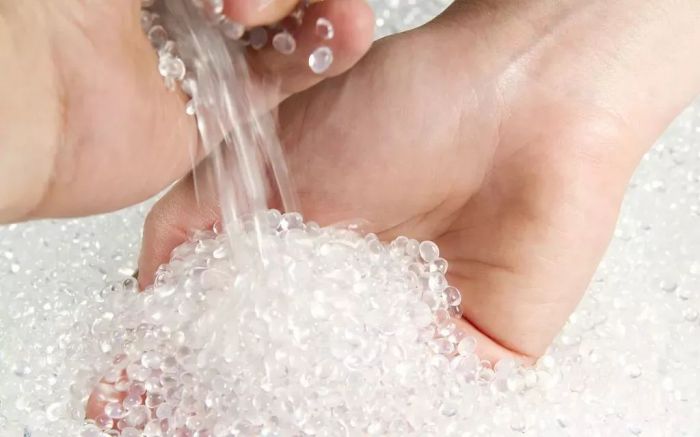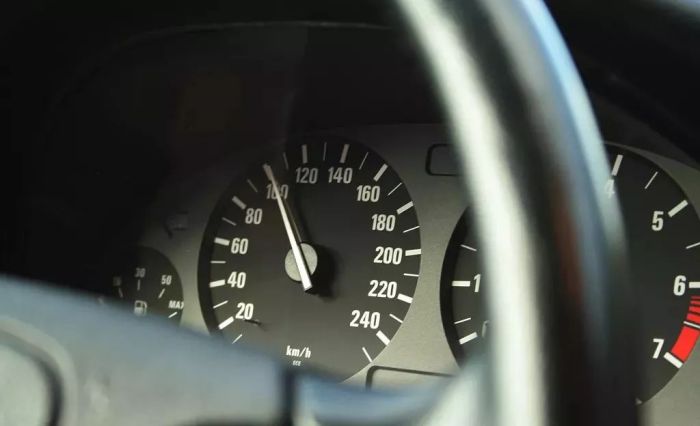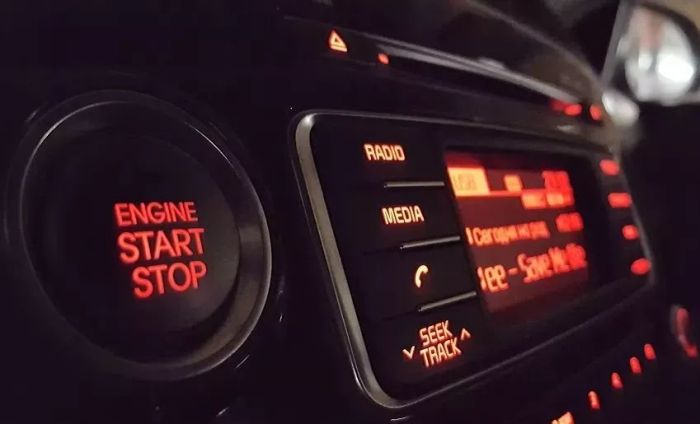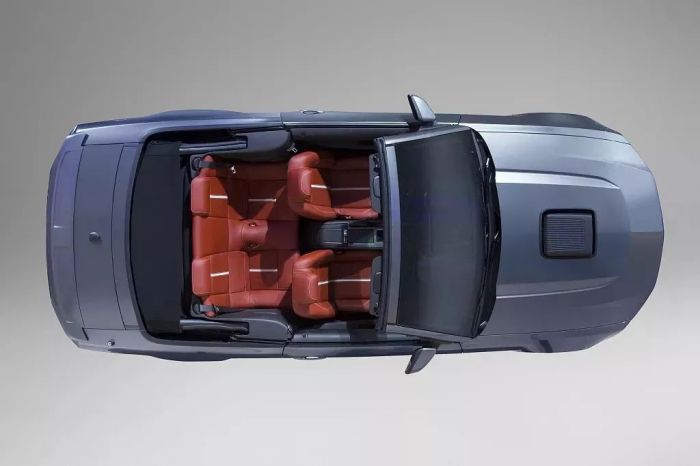There are many different kinds of plastic, and they are used in vehicles for interior, exterior, and functional elements. Plastics are often categorized into three groups based on their numerous uses: general-purpose plastics, engineering plastics, and special plastics.
common plastic
In general, it refers to polymers that are easily formed, inexpensive, and extensively utilized. The five main types of thermoplastic general-purpose plastics are polypropylene (PP), polyethylene (PE), polyvinyl chloride (PVC), polystyrene (PS), and acrylonitrile-butadiene-styrene copolymer (ABS).
01 PP
Pleated glue, also known as polypropylene, has a water absorption rate of less than 0.02%, is clear, light in weight, and resembles white wax in appearance. PP shrinks between 1.0 to 3.5%, therefore a thickness of 1.5 to 2.5 mm is ideal.
The extensive usage of PP in the automobile industry has two primary drawbacks: it is brittle in low temperature conditions and easy to burn (it will leak burning components). In order to change PP in industrial practical applications, the appropriate additives are added in response to these two issues.
They are fragile at low temperatures and are mostly changed and made tougher by adding additional tough materials, stiff particles, or elastomers, such as rubber (EPDM), talcum powder (TD), or glass fiber (GF). Flame retardants will be added if they are combustible.
Numerous instrument panels, door guards, pillar guards, bumpers, water tanks, and ornamental panels are just a few of the vehicle goods constructed with PP resin. There are several trends in the use of PP in autos.

02 PE
One of the lightest polymers, polyethylene is a transparent, white waxy substance with exceptional water, acid, and alkali resistance as well as resistance to organic solvents and excellent electrical insulation. The appropriate thickness is 1.0-2.5mm, and the shrinkage rate is 1.5-4.0%.
PE's greatest drawback as a material for automobiles is that it burns easily. The simplest and most popular technique to enhance PE's combustion performance is to add an appropriate flame retardant.
Fuel tanks, air ducts, front seat trim covers, air duct assemblies (HDPE), left and right ventilation pipe assemblies, connecting bars for up and down wind direction blades, left and right foot vent assemblies, etc. are the most common automotive goods constructed of PE.
03 PVC
frequently used polyvinyl chloride PVC is a material with many components. Each component's unique composition results in a variety of PVC particles with varying degrees of hardness and mechanical characteristics. Typically, it is separated into two groups: soft PVC and hard PVC.
Shrinkage rates for hard and soft PVC are 1–1.5% and 2–2.3%, respectively; the ideal thickness is 2–3.5mm.
Polyvinyl chloride is the most often used plastic raw ingredient in automobile plastic items. PVC instrument panel skins, steering wheels, liners, and automobile flooring materials are just a few examples of the numerous automotive plastic goods created of this material. This is due to the affordable pricing of PVC resin as well as the efficient processing and extensive mechanical characteristics.
04 PS
Hard glue or polystyrene is a translucent, glass-like substance with high fluidity and no water absorption.
PS is frequently graft-copolymerized with other materials because to its brittleness, such as butadiene to create HIPS. When rubber is added to the composition, the composition's impact strength and surface hardness are significantly increased. The ideal thickness is 2-3mm, and the shrinkage rate is 0.4-0.7%.
PS is mostly used in vehicles for lamp shades, lighting goods, and instrument housings.
Additionally, polystyrene may be modified and copolymerized to create several fixed-matching alloy plastics of the PS family, including SMA, as well as foamed to create packaging materials and thermal insulation materials for the manufacture of ceilings. in the creation of the dashboard skeleton for cars.
The body of the 05 ABS Acrylonitrile-Butadiene-Styrene copolymer, sometimes referred to as super indestructible glue, is white. The appropriate wall thickness is 1.8–3mm, and the shrinkage rate is 0.4-0.7%.

It is extensively utilized in the automobile industry because to the diversity of ABS, good surface treatment effect, and affordable price. Materials with strong weather resistance, such as AES and ASA, have been used extensively to complement ABS in commercial vehicles due to its weak weather resistance.
ABS is used when the product needs surface treatment (such as water transfer film, spraying), whereas ASA and AES are used when it doesn't.
The most common car goods are armrests, shift handle heads, inner handles, decorative panels for license plates, rear spoiler assemblies, rearview mirror bodies, radiator grille bodies, and ornamental brilliant strips.
Specialized plastics
Considering their excellent all-around mechanical qualities, engineering plastics are also extensively employed in the automobile industry. Introductions to polyamide (PA), polymethacrylate (PMMA), polyoxymethylene (POM), polyamide (PU), and polycarbonate (PC) are the major thrust of this essay.
01 PA
There are many other varieties of PA utilized in industry, but PA6, PA66, and PA610 are the most often used ones. Polyamide is also known as nylon.
The component has poor dimensional stability and has a 1-2% shrinkage rate as a result of heat expansion and water absorption. Pay close attention to how moisture absorption changes in dimension after molding. When the relative moisture absorption is saturated, the water absorption rate is 100% and it may absorb 8%. 2-3.5mm is the ideal wall thickness.
In the automobile industry, PA is primarily utilized in the production of hoses (fuel and brake hoses), combustion oil filters, air filters, oil filters, water pump housings, water pump impellers, fans, brake and power steering fluid tanks, White shutters, headlight housings, and seat belts.

02 PMMA
Plexiglass, also known as polymethacrylate, has good light transmission and is resistant to fading in the sun. Transparent structural elements with specific strength requirements are suitable plastic goods.
PMMA is frequently used in door glass, lamp glass covers, and automobile lighting signs due to its excellent light transmission ability.
03 POM
POM, sometimes called plastic steel, has a shrinkage rate of 2.5% to 3.5% and a suitable wall thickness of 1.5mm to 2.5mm.
The production of various valves (drainage valves, air conditioner valves, etc.), various impellers (water pump impellers, heater impellers, oil pump wheels, etc.), various electrical switches, and electrical instruments all employ POM in autos. Various knobs, tiny gears, and door pins, etc.

Excellent creep resistance, impact toughness, and heat and cold resistance are all features of
04 PC
Polycarbonate. The appropriate wall thickness is 2-3.5mm, and the shrinkage rate is 0.5-0.7%.
PC's mechanical strength, resilience to temperature change, and shrinking may all be enhanced by adding glass fiber. The stiffness will grow with prolonged usage at about 100°C, and the internal stress can be improved by annealing.
A brief introduction to PC-ABS, the primary synthetic body:
PC-ABS is a material that has been combined with ABS and PC; it is often provided as pellets.
There will be stratification if you merely combine the two substances and inject them together.
While ABS has the advantage of superior fluidity but a disadvantage of poor surface hardness, PC-ABS keeps the benefits of both materials while having the rigidity and toughness of PC but without the stress cracking or high viscosity.
The mechanical qualities of PC-ABS are intermediate; they include high surface hardness, high stiffness and toughness, as well as high resistance to stress cracking.
PC is primarily utilized to make left and right wheel cover guards, instrument bezel bodies (PC+ABS), left and right air frame covers, center air frame covers (PC+ABS), and rear bumper cushions in the automobile industry.
05 PU
According to the various polymerization reaction products, polyurethane is often categorized into stiff and soft varieties.
The most popular polyurethane foams are utilized in coating materials, polyurethane rigid plastic sheets, polyurethane elastomers, seat soft foam materials, ornamental elements, couch leather, and roof accessories, which are used in car interiors and vibration-absorbing components. Various soft and hard polyurethane foam materials are the most often used.
It may be turned into automotive polyurethane coatings, adhesives, sealants, and more. It provides vibration isolation, sound insulation, noise reduction, and thermal insulation properties.
Dashboards, rearview mirrors, bumpers, seat linings, headrests, steering wheels, dashboard anti-vibration pads, pillar trims, front roof linings, window frames, roofs, and side roofs are PU characteristic car parts. Decorations for the frame, the door, the sun visor, the top shelf of the rear seat, etc.
Unique Plastics
01 Plastic with glass fiber reinforcement
Based on the original pure plastic, glass fiber reinforced plastic adds glass fiber and other additives to broaden the material's range of applications.

Generally speaking, glass fiber reinforced materials, a type of material utilized in structural engineering, are usually employed in the product's structural sections. like PP, ABS, PA66, PA6, PC, and POM.
advantage:
① The heat resistance temperature of the reinforced plastic, especially the nylon plastic, is significantly greater than before without the glass fiber because the glass fiber is a high temperature resistant material once it is reinforced;
②The mutual movement between the plastic's polymer chains is constrained, which significantly lowers the reinforced plastic's shrinkage rate and increases stiffness;
③Reinforced polymers won't shatter under stress, and their impact resistance will be significantly increased;
④ The strength of plastics is substantially increased by the use of glass fiber, a high-strength material, in terms of tensile strength, compressive strength, and bending strength.
⑤ The combustion performance of reinforced plastics significantly decreases when glass fiber and other additives are added, and the majority of materials are inflammable.

Glass fiber shrinkage at a typical rate:
Glass fibers include: PP: 0.2-0.8% ABS: 0.1-0.2% PA66+ glass fiber: 0.5% PA6+ glass fiber: 0.4% PC: 0.1-0.3% POM: 0.9-1.2%
The automobile industry's use of FRP/composite materials, the typical material for glass fiber reinforcing
bodily organs:
include the body shell, the hardtop, the sunroof, the doors, the radiator grille, the headlight reflector, the front and rear bumpers, etc., as well as the interior components. The primary use of FRP and composite materials in autos is in this area. It primarily aims to satisfy the demands for a streamlined body design and a premium look. There is now a lot of room for advancement and use.
This part's primary component is glass fiber reinforced thermosetting plastic, and common molding techniques include hand lay-up/spraying, SMC/BMC, RTM, and others.
Structure:
The goal is to increase the design flexibility, adaptability, and integrity of the parts. This includes the front-end bracket, bumper frame, seat frame, floor, etc.
Utilize materials such as high-strength SMC, GMT, LFT, and others.
Functional components:
Its key need is oil corrosion resistance at high temperatures, particularly for the engine and its ancillary parts. Such as: heater cover, water tank components, water outlet housing, water pump turbine, engine sound insulation board, air filter cover, gear chamber cover, air guide cover, intake pipe guard, fan blade, fan air guide ring, heater cover, etc.
SMC/BMC, RTM, GMT, and glass fiber reinforced nylon are the primary process materials.











